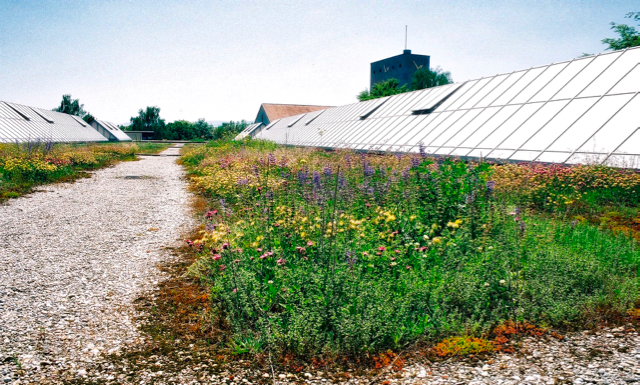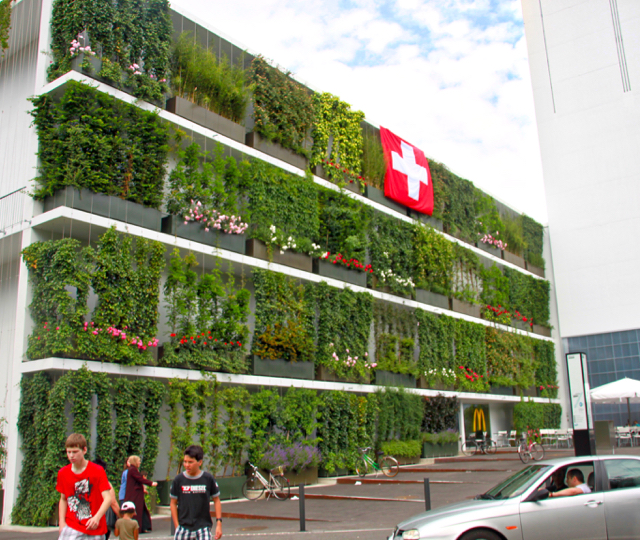Sound insulation is often overlooked when it comes to green roofs and green walls. The combination of soil, plants and trapped layers of air within green roof systems can act as a noise insulation barrier. Sound waves are both absorbed, reflected or deflected. Whilst the growing medium tends to block lower sound frequencies, the plants tend to block higher frequencies. However the amount of sound insulation is dependent on the system used and the depth of the substrate. Therefore a green roof with a 12 cm substrate layer can reduce sound by 40dB and one of 20 cm by 46-50dB. In the light of this the deeper the substrate the greater the insulation effect.

Studies on Noise and Sound Insulation
There are have been a number of studies over the years on the issue of noise insulation. Overall they all come to the similar conclusions. Green roofs do provide positive insulation for sound.
United Kingdom
A study in the UK compared sound insulation of a standard non-vegetated roof system with that of a green roof. The results of the study were:
- Standard Unvegetated 33dB
- Vegetated [dry] 41dB
- Vegetated [wet] 51dB
- 100mm Concrete Wall 43dB
Canada
A further study in British Colombia conducted on extensive green roofs in British Colombia has shown:
- an increase of 5 to 13 dB in transmission loss over the low and mid frequency range (50 Hz to 2000 Hz).
- 2 dB to 8 dB increase in transmission loss in the higher frequency range relative to the transmission loss of a control roof.
Europe
A modelling study of traffic noise showed that green roofs can halve the amount of noise transfer inside a building. In effect replacing a standard roof with a green roof can shield road traffic noise by up to 10 dBA.
Green Walls

Studies have also shown that green walls also provide a noise barrier. Generally speaking green walls provide a 15db reduction in sound. They also have a sound absorption coefficient of about 0.40.
In short green walls do have potential to act as sound barriers. However improvements could be made to increase the amount of sound absorbed. Sealing up the joints in modular systems would increase the efficiency of green walls as noise barriers.
Summary
In conclusion even a limited coverage of vegetation can help with noise insulation This could be particularly important in areas of high noise pollution such as on the approaches to airports, as these levels are sufficient to provide noise insulation to buildings under aircraft flight paths. Furthermore along roads with heavy traffic.